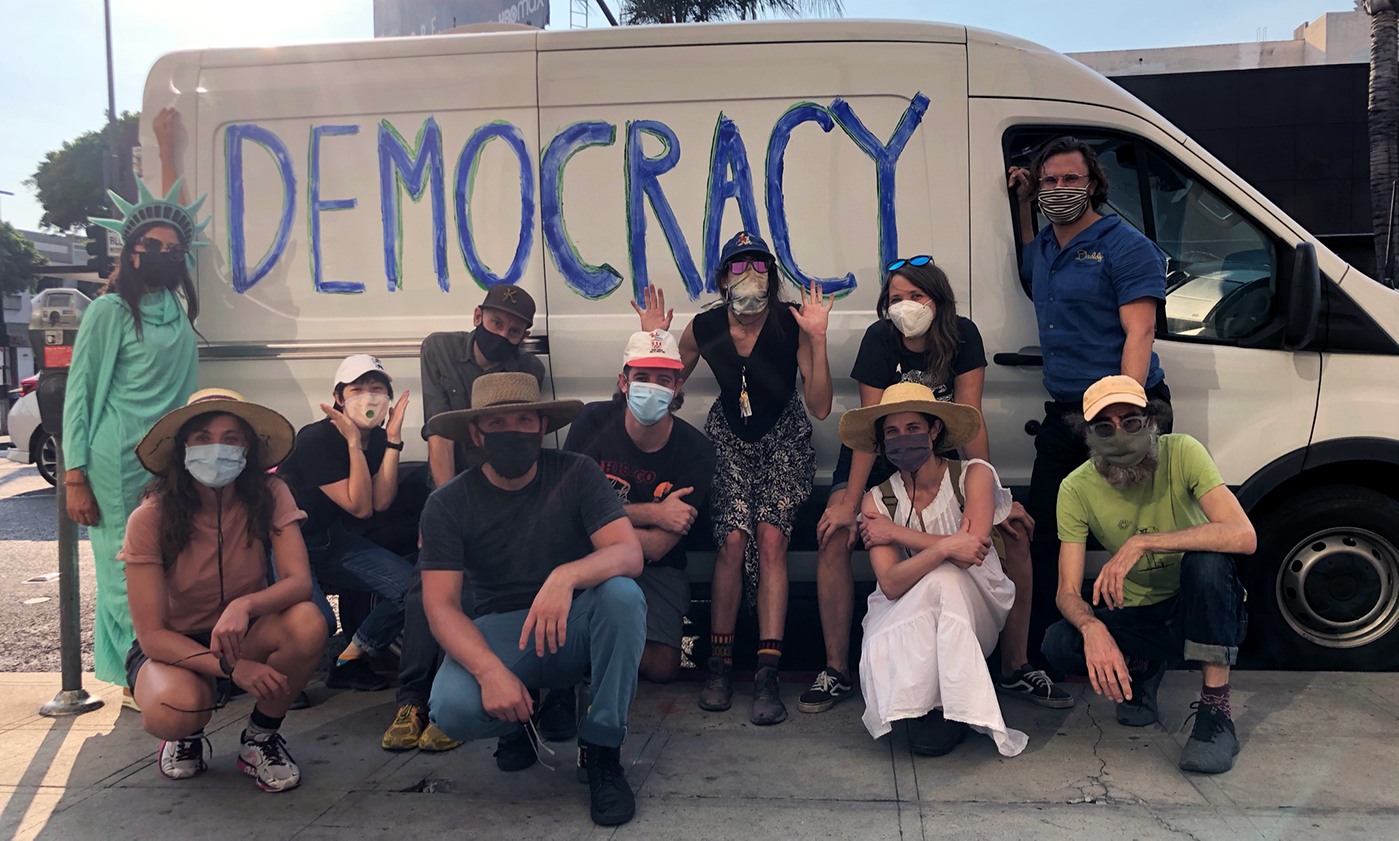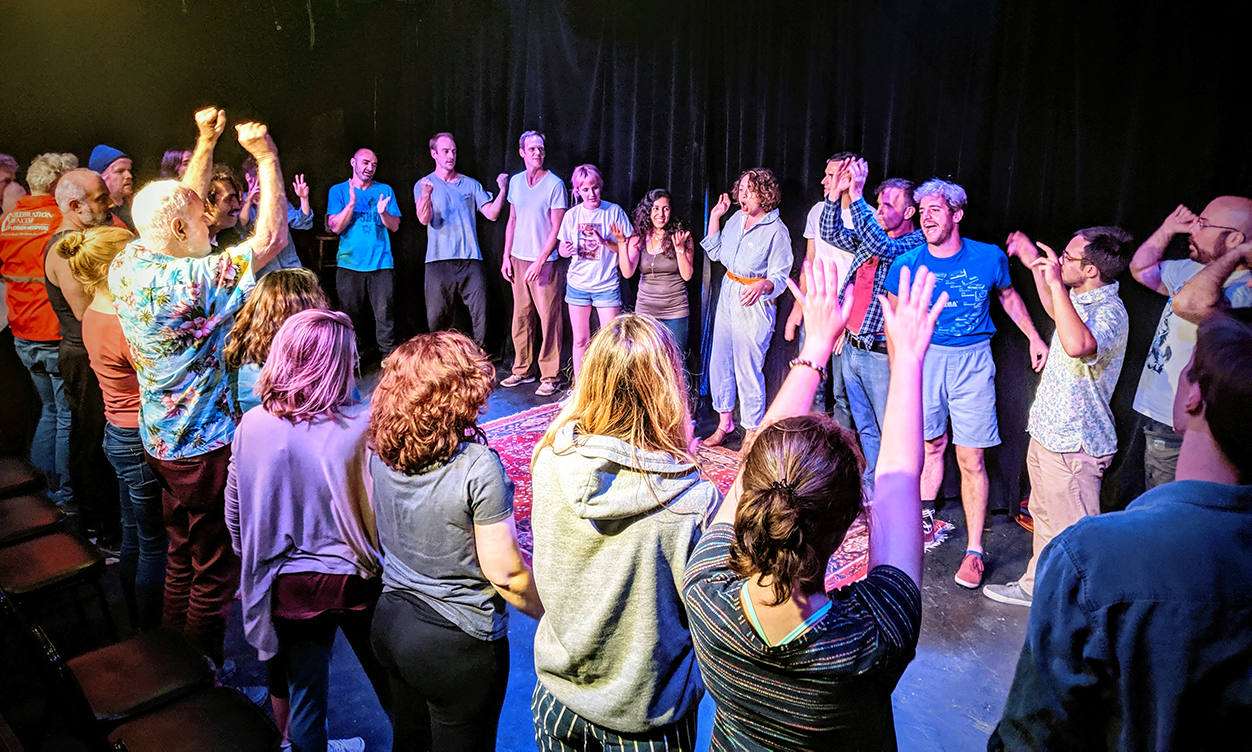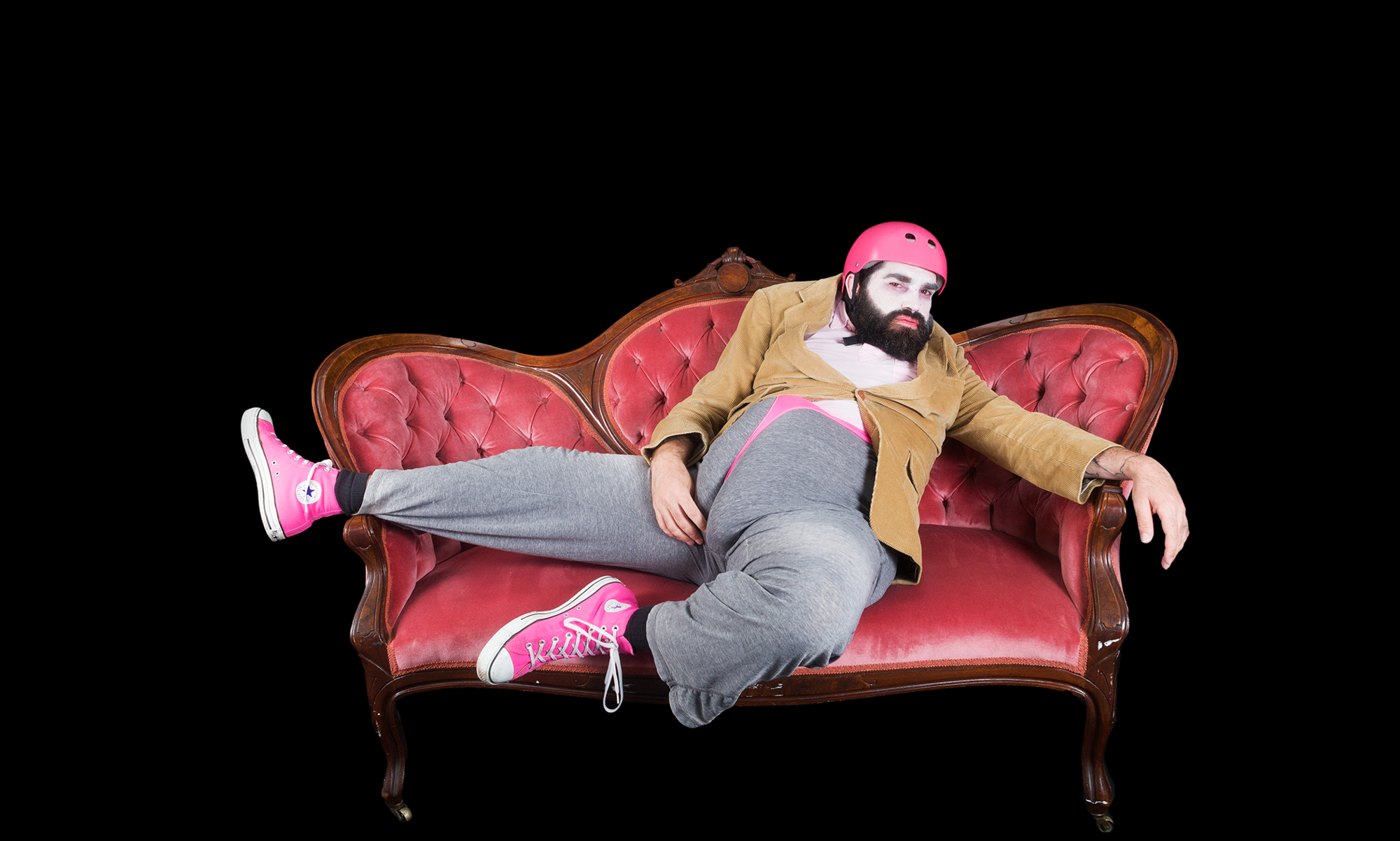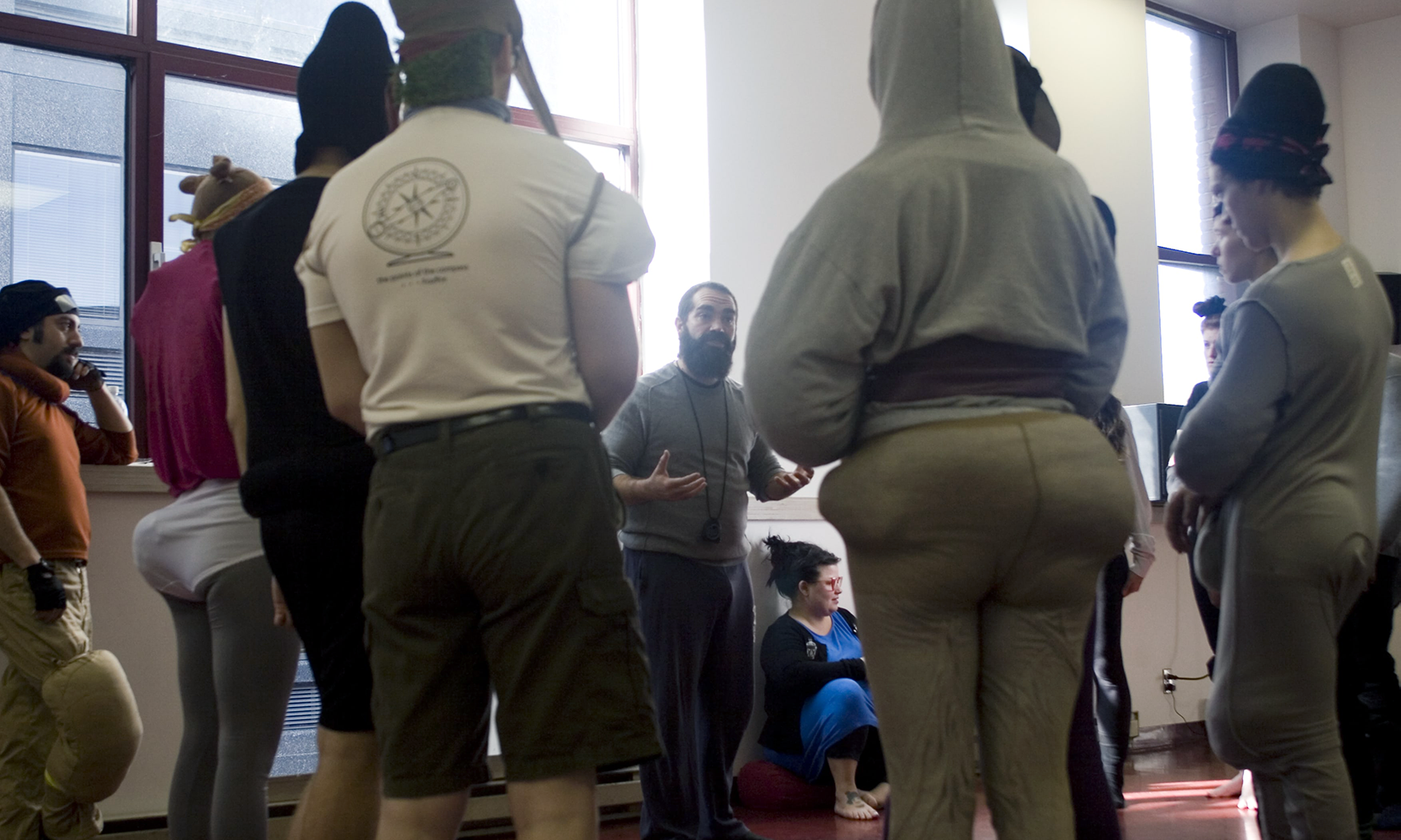It was a painful example of how insidious and pervasive white supremacist delusion, cissexism, and anti-Blackness is in clowning, even in a field dedicated to delightful humor and generosity of spirit. The two of us, along with a couple other group members, immediately began working with Davison on shifting Clown Theory toward an explicitly anti-racist and anti-oppressive framework. We were inspired by the moderators of the Facebook group Theatre Folx of Color, and by adrienne maree brown’s emergent strategy work. The new moderator team is multi-gendered and multi-racial, and they now focus on harm reduction, educating each other, and relationship-building through more one-on-one conversations. (If anyone is interested in learning more about our process related to the Facebook group, we’re happy to chat.)
There is still an exhausting, entrenched, and obstinate white male cohort resisting growth, but in this small, online pocket of the performance-making community, which includes many leaders in the field of clown, the culture is transforming for the better.
As the co-authors of this piece, our activism each takes its own shape. For Amrita, it focuses on further confronting this gatekeeping and on empowering the less visible bodies in this work in spaces like the Idiot Workshop, for which she is the managing director. The Idiot Workshop is dedicated to building community by bringing together contemporary clown and constructive troublemaking to comedians, dancers, and artists of Los Angeles. Alongside the founder John Gilkey, Amrita is challenging the pedagogy, which disproportionately upholds and celebrates cis het white men, and training and advocating for more Black, Indigenous, people of color (BIPOC) and LGBTQ+ students and teachers.
Clown embraces some of the darkest experiences of humanity and transforms them into the communal release of laughter. Clowning is an invitation to subvert and overcome.
Clowns as a Tool for Activism
The dominant perspective on clown thinks in terms of a universal: clown stems from humanity’s capacity to bounce back and persevere in the face of certain doom. Doom for clowns, of course, can be anything from existential dread of mortality to a hangnail. Either way, most clowns are taught to consider themselves avatars for buoyancy and resilience amidst the suffering of existence. This is why many of us have been taught that some form of the clown has been present in every epoch of time and within every region and culture of the world. But context is important. What is the clown rebounding from? What’s holding it down?
If clowns are ubiquitous because they capture our shared capacity to bounce back, then the forces that oppress the clown are analogous to the oppressive forces in our own lives. Embedded in the nature of clown is the spirit of joy and resistance in the face of overwhelming power. Clown embraces some of the darkest experiences of humanity and transforms them into the communal release of laughter. Clowning is an invitation to subvert and overcome. So to answer the question from the Clown Theory post—“... is there a place for a clown amongst protests for social and racial justice?”—our answer is yes. A clown can be a tool for an activist.


















Comments
The article is just the start of the conversation—we want to know what you think about this subject, too! HowlRound is a space for knowledge-sharing, and we welcome spirited, thoughtful, and on-topic dialogue. Find our full comments policy here